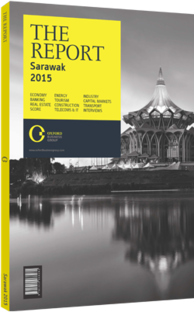OBG talks to Joseph Wong Kee Liong, President, Sarawak Housing and Real Estate Developers Association (SHEDA)

Interview: Joseph Wong Kee Liong
To what do you attribute the sustained boom in Sarawak’s property market?
JOSEPH WONG KEE LIONG: From a top-down perspective, Sarawak is reaping the benefits of the vision and far-sightedness of the Sarawak government, namely in helming and guiding the Sarawak Corridor of Renewable Energy (SCORE). Sarawak is positioning itself as a viable alternative to countries vying to compete against China for costeffective and reliable energy. On November 17, 2014, the Star Online reported that SCORE attracted foreign direct investment valued at over RM7bn ($2.13bn) within the first seven months of 2014. This figure ultimately translates into an increasing number of downstream industries and employment opportunities, attracting both technical and managerial expertise to cities such as Miri and Bintulu. Competition brought into the state by foreign and multinational companies also bolsters average income and purchasing power. We anticipate that if the state continues to offer competitively priced utility rates, mature infrastructure links and attractive tax incentives to investors, Sarawak will continue to see a rise in demand for property.
Another factor is rural to urban migration. The urban to rural population ratio currently stands at approximately 50:50. It is expected that within the next decade, this figure will increase to 70:30.
What are your projections for residential and commercial property prices over the next two years, and how do these relate to construction rates?
WONG: We expect a total of approximately 14, 000-15,000 units to be built per year. Prices of residential houses will keep rising due to high costs for land, construction, compliance, utilities and facilities, as well as the cross-subsidies carried over from the mandatory construction of low-cost housing. In addition, lack of infrastructure links and skilled workers limit accessibility, productivity and efficiency. The volume of commercial properties constructed, launched and sold might slow down in the second half of 2015 due to the additional 6% goods and services tax. One way of maintaining investors’ interest in these properties while remaining competitive would be for developers to absorb the tax into their selling prices.
What would occur if affordable housing development were left to market forces to a greater extent?
WONG: If parties refuse to acknowledge affordable housing and low-cost housing as two separate categories, the current policy will continue to negatively affect developers, consumers, the industry and Sarawak’s overall economic health.
Private developers have long taken the initiative to upgrade the specifications of a prescribed low-cost unit. A low-cost house should be a mere 433 sq feet, with no premix carriageway, fencing and car porch. However, developers have relied on a legal loophole to improve the low-cost house by – among other things – adding tiling, fencing and car porches, as well as increasing the floor space to over 700 sq feet. These upgraded low-cost houses were then sold above the statutorily fixed selling price through the mechanism of supplementary agreements. However, in early 2013 the Ministry of Housing condemned this practice as illegal. The effect was immediate. Banks withdrew approvals for loans and refused to finance housing that was sold using supplementary agreements. The result has been drawn out for over two years, with some developers still in limbo over property which can neither be sold nor handed over. SHEDA and the Ministry of Housing are still in discussion to resolve this issue.
The Sarawak government is currently considering the possibility of implementing levies in lieu of building low-cost housing. While this may be a step in the right direction, SHEDA is of the opinion that the funding of low-cost housing should not be solely the responsibility of developers. Rather, this social responsibility should be spread out equitably across other major relevant corporations and industries such as timber, oil and gas and oil palm plantations, to name just a few.
You have reached the limit of premium articles you can view for free.
Choose from the options below to purchase print or digital editions of our Reports. You can also purchase a website subscription giving you unlimited access to all of our Reports online for 12 months.
If you have already purchased this Report or have a website subscription, please login to continue.

